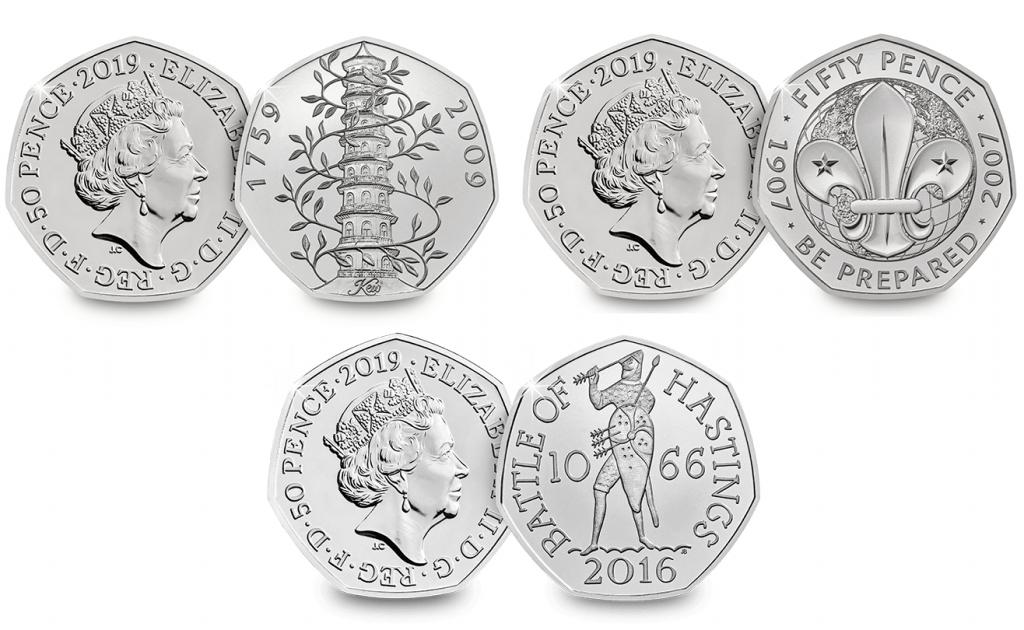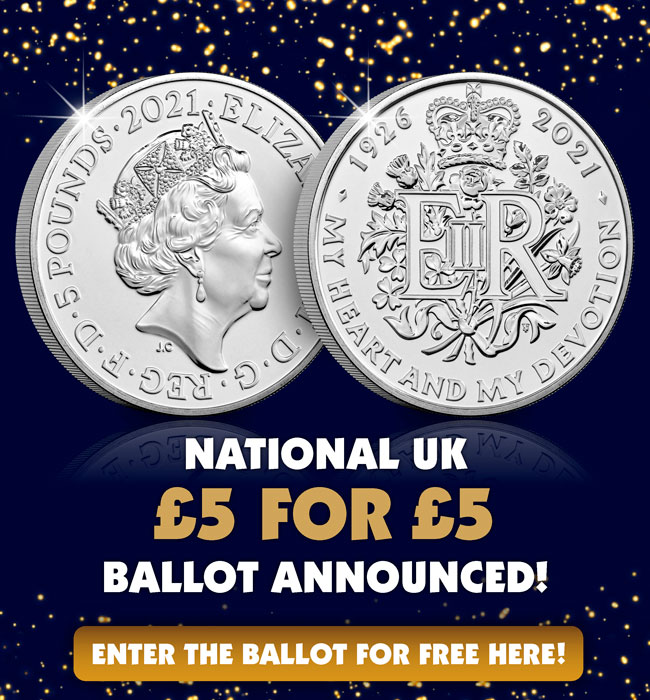Uncategorised
The coin we’ve all been waiting for… the 2021 UK Team GB 50p
Back in 2020, collectors were delighted by the announcement of the new Team GB 50p, released as part of the Annual Coin Set, to celebrate Team GB’s participation in the upcoming Olympic Games.
However, due to the coronavirus pandemic and the postponement of the Olympic Games to 2021, this 50p was never individually released in 2020.
Collectors were desperately been waiting for the chance to get their hands on this coin and it was finally individually issued in 2021.
The coin, designed by David Knapton, features a depiction of various Olympic sports and the official Team GB logo. But, arguably the most exciting feature of this brand new coin, is that it’s dual-dated!
Unlike the version of this coin issued as part of the 2020 Annual Coin Set, this coin features a 2021 dated obverse, whilst still keeping the original 2020 reverse design!
Excitingly for collectors, this makes the new 2021 UK Team GB 50p one of only a handful of UK coins to feature a dual-date – adding to it’s collectability!
The 2021 Team GB 50p is no longer available from The Royal Mint, but you can secure it in Brilliant Uncirculated quality from Change Checker for just £12.99 (p&p) >>
Dual-Dated Coins
The 2021 UK Team GB 50p is one of only a handful of UK coins to feature a dual-date…
Other dual-dated 50ps include the 2019 dated Kew Gardens, Battle of Hastings and Scouts 50p coins, issued as part of the 50th anniversary of the 50p collections. These 50p coins featured both their original issue dates on the reverse and their re-issued 2019 dates on the obverse!

Kew Gardens, Top Right: Scouting Centenary, and Bottom: Battle of Hastings.
Additionally, this 50p, which celebrates the UK’s presidency of the European Council of Ministers and the completion of the Single Market features both a 1992 and 1993 date on its reverse!
Olympic 50p Craze
In 2012, 29 50p coins were released to commemorate the London Olympics and millions rose to the challenge of collecting them all. For many, this marked the start of their interest in coins.
The Royal Mint now estimates that as many as 75% of the Olympic 50p coins have been removed from circulation by collectors, which is a testament to their popularity.

Since then an estimated 75% of these coins have been removed from circulation by collectors adding them to their collection.
And so collectors were delighted in 2016 when The Royal Mint issued a special 50p to wish Team GB success for the Rio 2016 Games. It was considered by many to be the 30th Olympic 50p, so could the brand new Team GB 50p be considered the 31st?

The coin’s obverse features a swimmer with the Team GB logo, the Olympic rings and the inscription ‘TEAM GB’. Designed by Tim Sharp, the coin was officially endorsed by Team GB and celebrates the spirit of British Olympians.
Fourth Cancellation in Games Entire History
Since the opening of the modern Olympics in 1896, the international sports competition has only been cancelled three times: once during World War I and twice in World War II.

The COVID-19 outbreak is the only non-militant threat to have disrupted the Olympic Games during peacetime.
This 50p marks not only Team GB’s participation in one of the most renowned sporting events worldwide, but also the impact the past year has had on centuries worth of tradition.
Secure your 2021 UK Team GB 50p today!
NATIONAL UK £5 FOR £5 BALLOT ANNOUNCED!
This year, Her Majesty Queen Elizabeth II celebrates her 95th Birthday, making her the first ruling monarch in British history to reach this milestone.
In celebration of this very special royal event, The Royal Mint issued a brand new £5 coin, featuring the Royal Cypher and an inscription taken from Her Majesty’s first televised speech.
But Change Checker is incredibly excited to announce that in celebration of Her Majesty’s birthday, we’re launching a NATIONAL EXCLUSIVE UK £5 for £5 Ballot!
We are giving 1,000 lucky collectors the chance of owning the brand new Queen Elizabeth II 95th Birthday £5 for its FACE VALUE of just £5!
It’s completely free to enter, all you need to do is click here >>
The ballot will close on the 25th June and winners will be contacted on the Monday 28th June with details of how to claim this new £5 coin for just £5 – so you must act fast if you want to be in with the chance!
As the Queen reaches this significant birthday, demand for this coin is already high, not just amongst fans of UK royalty coins but for collectors worldwide.
And now, with this Change Checker £5 Ballot NATIONAL EXCLUSIVE, we’d hate for you to miss out!
To sign-up now, for FREE, simply click here >>
The ONLY WAY to own Britain’s new Royal £5 coin for just £5!
Don’t miss out on your chance of owning the 2021 UK Queen Elizabeth II 95th Birthday £5 for its face value – just £5!
The winners will be contacted June 28th, so you must act fast if you want to be in with the chance! Simply click here to sign up >>
Her Majesty’s 95th Birthday Celebrated on BRAND NEW Isle of Man 50p coins!
This year Her Majesty becomes the first monarch in British history to celebrate a 95th birthday – an incredible milestone that has been celebrated by Mints all around the world.
And now to mark this incredible achievement a fantastic set of BRAND NEW 50p coins have been issued by the Isle of Man and fully approved by Her Majesty the Queen.
In this blog we guide you through these remarkable 50p coins and you can find out how to secure them for your collection…
The Complete Brilliant Uncirculated 50p Set
This fantastic collection features all six new 50p coins, each struck to a Brilliant Uncirculated quality and each featuring a specially commissioned portrait of Her Majesty by sculptor Luigi Badia, charting her reign from the 1950s to the present day.
What’s more, the coins will come protectively housed in a bespoke presentation pack that has been designed specifically for your coins.
This complete set is surely a MUST-HAVE for any serious coin collectors, so if you’d like to secure one for your collection for JUST £37.50 (+p&p) then click here >>>
2021 Queen Elizabeth II 95th Birthday 50p
What’s more, you can secure the 2021 Queen Elizabeth II 95th Birthday 50p for JUST £6.25 )+p&p) here >>>
This 50p coin features the brand new portrait of Her Majesty on the reverse by sculptor Luigi Badia, specially commissioned to mark this important milestone in Queen Elizabeth II’s life.
The coin is fully approved by Buckingham Palace and the Queen and is the perfect to tribute to Her Majesty, and a fantastic heirloom for you and your family to mark this important moment.
You can secure this BRAND NEW 50p coin for just £6.25 (+p&p) today – but with demand extremely high you’ll need to act now! Order yours here >>
The STRICTLY LIMITED Queen’s 95th Birthday Silver 50p Coin
You also have the chance to own the BRAND NEW 50p coin as a strictly limited Silver Proof! Your coin will come complete in a presentation case with a numbered certificate guaranteeing your coin’s place within the strict edition limit.
The Silver Proof editions are without a doubt the collector’s favourite and almost always completely SELL-OUT. And with an edition limit of JUST 4,995 coins, you’ll need to act now if you want to secure one for your collection.
Click here to secure yours now >>
Can I find these 50ps in my change?
If you’re living on the Isle of Man, then yes!
10,000 of each coin will be entering circulation on the Isle of Man and when you compare that to the mintage figures for UK coins (our rarest 50p in circulation has a mintage of 210,000) you’ll realise just how few of these coins are actually out there.
Coins issued on the Isle of Man typically have lower mintage figures due to the smaller population of just 84,000 which means that their coins are particularly sought-after amongst collectors.
And, given the significance of this anniversary, I’m sure that British Isles collectors will be quick to snap these ones up!
Coins celebrating royal anniversaries always prove popular with collectors and in this incredible anniversary year, these coins are sure to be in high demand.
Will you be adding these coins to your collection? Let us know in the comments below!
Secure the Complete Queen’s 95th Birthday Brilliant Uncirculated 50p Set
You can secure this set of BRAND NEW 50p coins for just £37.50 (+p&p) – but with demand extremely high you’ll need to act now!








